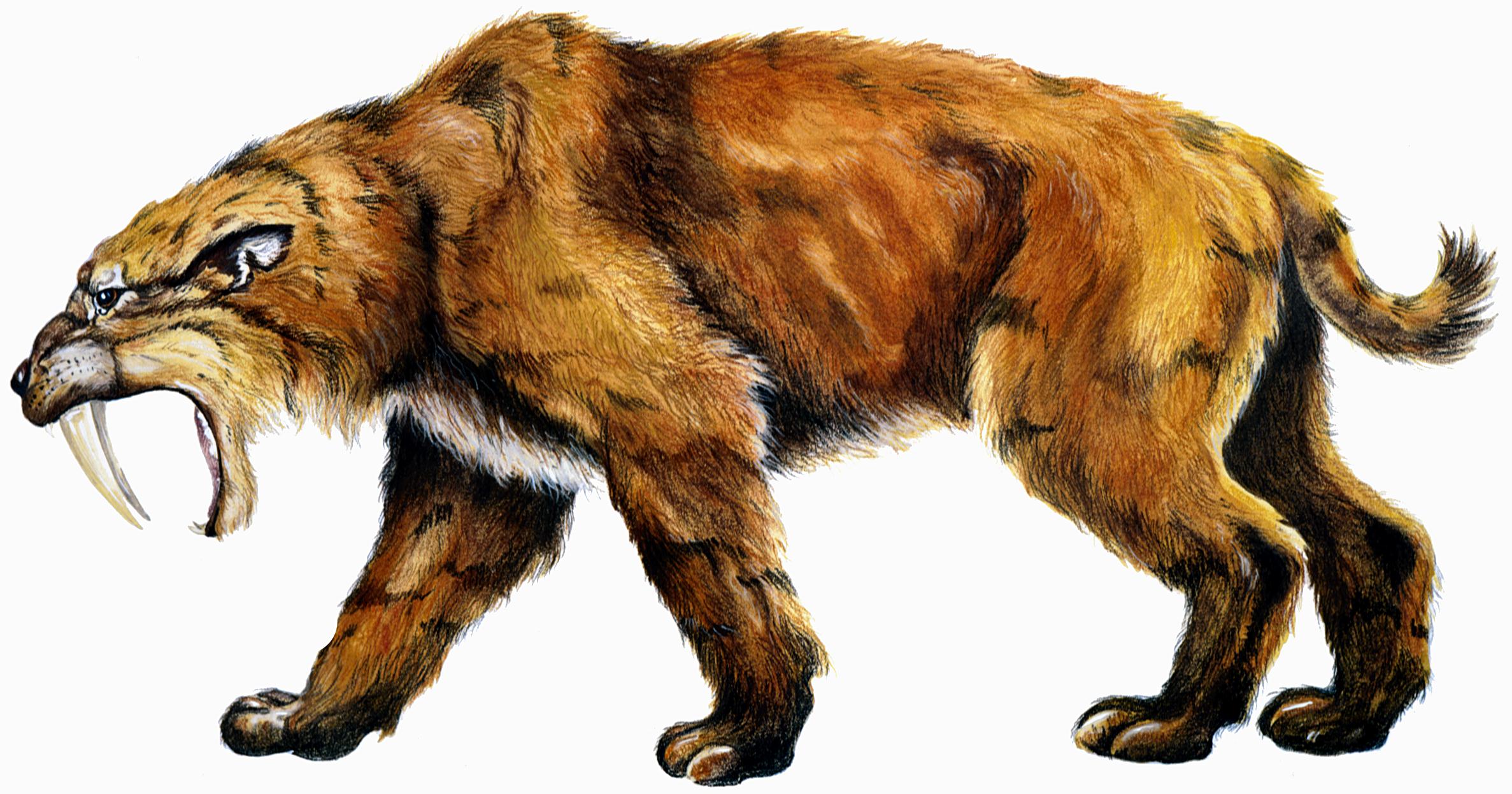I am a big fan of all things cat, and saber-toothed tigers have held a particular place in my heart and imagination. Characterized by long, curved saber-shaped canine teeth that possibly extended from the mouth even when it was closed (magic, I know), the saber-toothed “tiger” (“Smilodon”) wasn’t a tiger at all. She didn’t live or hunt like the modern tiger and she didn’t even have stripes. In fact, since fur decomposes much faster than bones we don’t know what kind of coat the saber-tooth wore. What we do know is that she was stocky.
Saber-toothed cat (Smilodon fatalis). Credit: Indiana State Museum, via: Indiana University
With a skeleton that compares more to that of a bear than a tiger, she was about a foot shorter than today’s lions but nearly twice as heavy. Found in North America and Europe, this type of cat ruled the world from about 16 million until 11,000 years ago. They used their saber-teeth to stab bison, horses, sloths and mammoths.
Unlike today’s tigers, saber-toothed tigers were social creatures. Bone fossils suggest that crippled saber-tooths limped around for years, which might mean that they were “cared for” by their peers.
So if saber-toothed tigers were so caring and powerful, why did they go extinct? Researcher Larisa DeSantis, a vertebrate paleontologist at Vanderbilt University in Nashville, told LiveScience, "The popular theory for the megafaunal extinction is that either the changing climate at the end of the last ice age or human activity, or some combination of the two, killed off most of the large mammals. In the case of the great cats, we expect that it would have been increasingly difficult for them to find prey, especially if they had to compete with humans. We know that when food becomes scarce, carnivores like the great cats tend to consume more of the carcasses they kill. If they spent more time chomping on bones, it should cause detectable changes in the wear patterns on their teeth."
The saber-toothed tiger’s long, stocky appearance make her a perfect subject for a king-size headboard. I was also excited that I could create my own fur pattern. Not that anyone dictates the patterns I choose for my animals, but I found that the more I know about an animal’s real appearance the less bold I get. And never mind that the saber-toothed tiger didn’t have a long tail but a stubby, lynx-link protrusion. Thankfully, I didn’t find out about her silly stub until I had created this beautiful large-tailed beast.
Made from Kona cotton, 100% cotton batting and Finca Presencia cotton thread, this kitty is for sale. Contact me for details.


